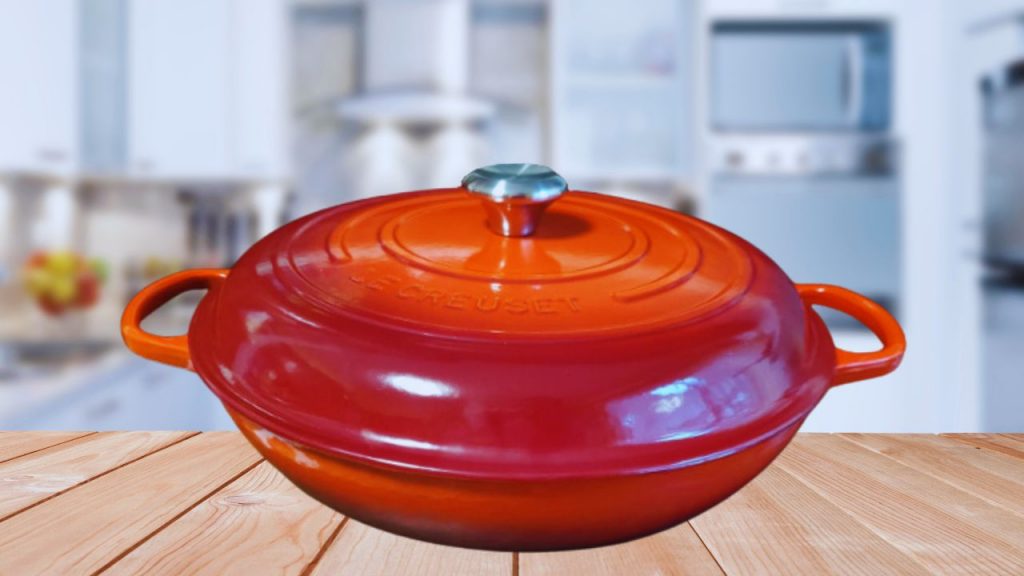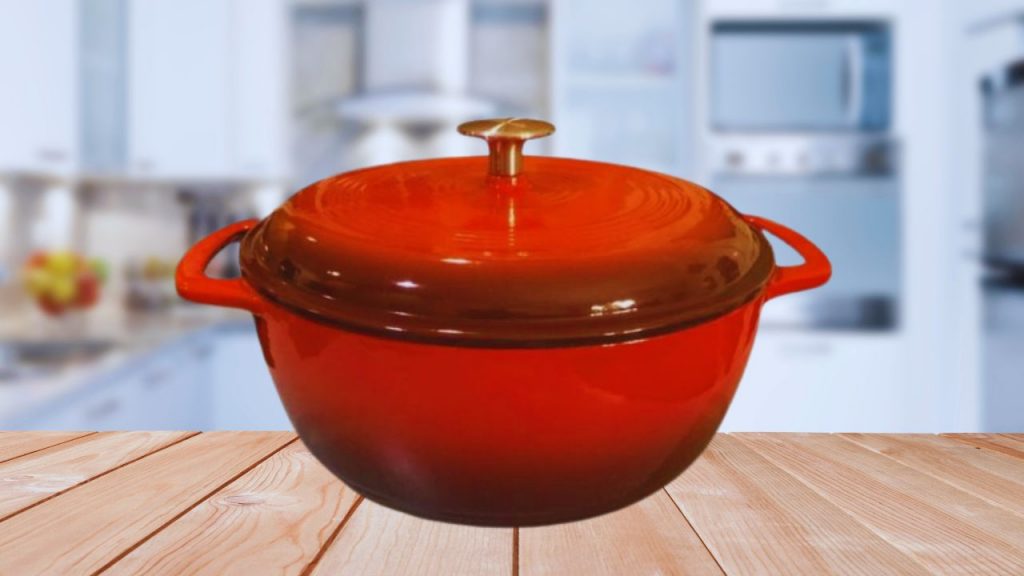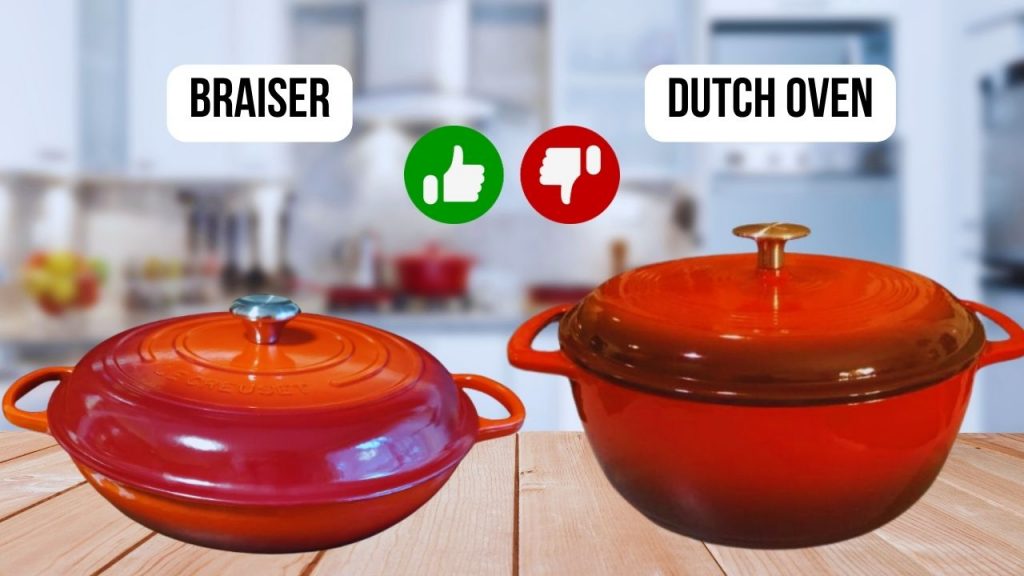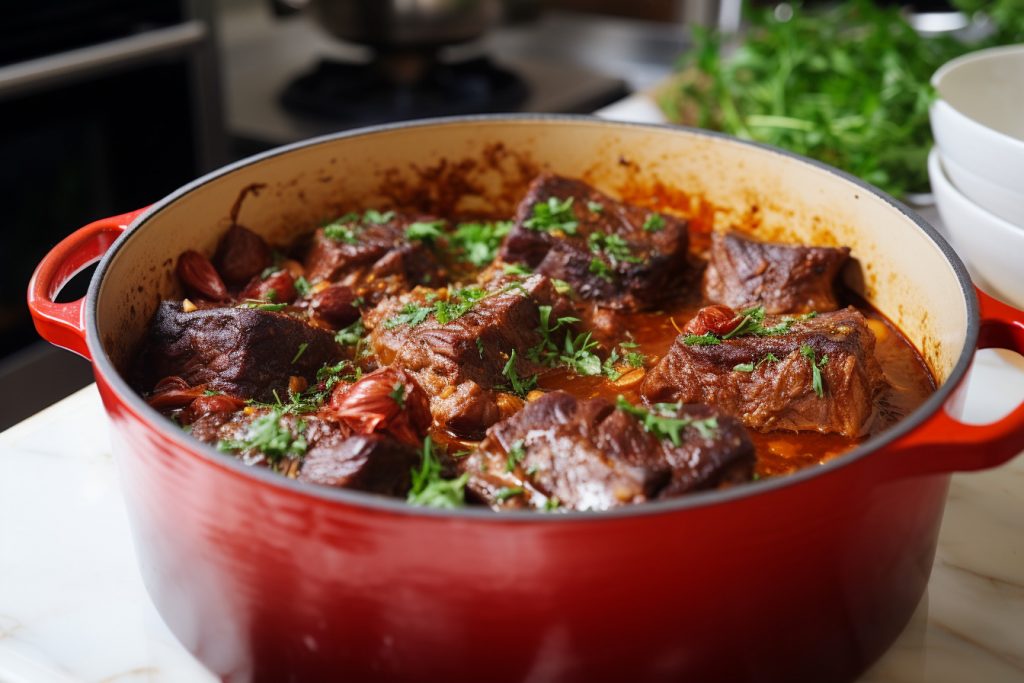As a seasoned restaurant chef with a decade of culinary expertise, I understand the importance of picking the right equipment for cooking. Two essential pieces of cookware that often come into question are the braiser and the Dutch oven.
In this post, we’ll explore the features, uses, and differences between these two versatile kitchen tools to help you make smart decisions for your kitchen.
What Is a Braiser?

A braiser is a heavy-bottomed, wide-bottomed pan with a tight-fitting lid. It is often made of materials like cast iron, stainless steel, or enameled cast iron.
Braisers are designed for slow-cooking and braising techniques, making them perfect for dishes that require a combination of searing and simmering. The broad cooking surface allows for even heat distribution and the ability to accommodate large cuts of meat, whole poultry, or vegetables.
What Is a Dutch Oven?

A Dutch oven, on the other hand, is a deep, heavy pot with thick walls and a tight-fitting lid. Dutch ovens can be made from cast iron, stainless steel, or enameled cast iron, and they are known for their exceptional heat retention and distribution.
Dutch ovens are incredibly versatile. They can be used for various cooking methods, including braising, roasting, frying, and even baking. They also come in different sizes, from small to large, making them suitable for both small and large-scale cooking.
Similarities and Differences Between Braiser and Dutch Oven

While both braisers and Dutch ovens are excellent for slow cooking and braising, they do have distinct differences:
Size and shape: Braisers are wider and shallower, which makes them ideal for searing and braising. Dutch ovens are deeper and can hold more liquid, making them versatile for various cooking techniques.
Cooking methods: Dutch ovens are more versatile and can handle a broader range of cooking methods, including baking and deep frying. Braisers are designed explicitly for slow cooking and braising.
Heat distribution: Both braisers and Dutch ovens are known for their even heat distribution, which helps prevent hot spots and ensures consistent results.
Materials: They can be made from similar materials like cast iron and enameled cast iron, but the shape and size are what set them apart.
When To Use a Braiser
Braisers are best used when you want to achieve the following:
- Searing and braising meats: Braisers excel at searing meats to lock in flavors and then simmering them in liquid to make them tender and flavorful.
- Cooking meals with a high liquid-to-solid ratio: A braiser’s wide, shallow design allows for more liquid, making it ideal for stews, pot roasts, and coq au vin.
- Creating a flavorful sauce or gravy: The surface area of a braiser is excellent for reducing sauces and gravies, intensifying their flavors.
When To Use a Dutch Oven

Dutch ovens are your go-to cookware for a wide range of purposes:
- Baking: Dutch ovens are excellent for baking bread, casseroles, and desserts. Their thick walls and tight lids create an oven-like environment for consistent and even baking.
- Roasting: A Dutch oven can be used to roast meats and vegetables, especially if you want them to retain moisture and flavor.
- Frying: Dutch ovens can handle deep frying, making them suitable for frying chicken, donuts, or other fried delights
- Slow-cooking soups and stews: Dutch ovens can handle dishes with high liquid content and are perfect for simmering soups and stews.
Can You Use a Dutch Oven Instead of a Braiser?
Yes, a Dutch oven can be a substitute for a braiser. The Dutch oven‘s versatility makes it an excellent all-around choice for various cooking methods, including braising.
However, if you’re primarily focused on searing and braising, a dedicated braiser may offer better results due to its shallower design and wider cooking surface.
Conclusion
The braiser and the Dutch oven are both indispensable tools, each with its unique strengths and versatility. When selecting between them, consider the dishes you most frequently prepare and the required versatility.
A braiser is your go-to for searing, simmering, and creating sumptuous sauces, while a Dutch oven shines in baking, roasting, frying, and slow cooking. Whether you choose one or both for your kitchen, you’ll be well-equipped to create delicious, hearty, and mouthwatering dishes.
If you are into cooking with Dutch ovens then look at the top-rated Dutch ovens.


A dutch oven can do everything a braiser can do just better.
You’re absolutely right! A Dutch oven offers more versatility due to its depth and ability to handle a wider range of recipes. That said, a braiser excels in specific tasks like shallow frying or braising meats with less liquid, so it depends on the cooking style. Do you find yourself using your Dutch oven for braising often?